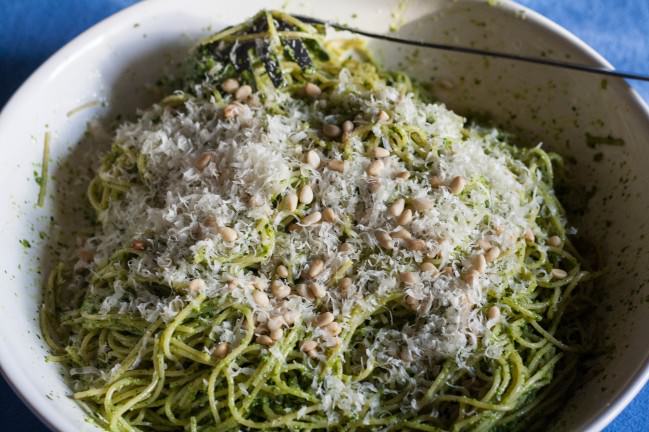 Just in case you have basil coming out of your ears or your farm share and you don’t already have a pesto recipe… Here’s how I make PESTO!. I haven’t actually measured out my pesto ingredients in years, so when I made it this week, it was a fun exercise to measure, record, and compare to the recipe my mom gave me years ago, when I left for college. Another fun part of digging out my recipe was discovering that my Aunt Elly taught my mother to make pesto via a note written on the card. A food processor or blender makes this a dream. But making PESTO! can be done via mortar and pestle as well. In fact, that’s how it got its name.
Just in case you have basil coming out of your ears or your farm share and you don’t already have a pesto recipe… Here’s how I make PESTO!. I haven’t actually measured out my pesto ingredients in years, so when I made it this week, it was a fun exercise to measure, record, and compare to the recipe my mom gave me years ago, when I left for college. Another fun part of digging out my recipe was discovering that my Aunt Elly taught my mother to make pesto via a note written on the card. A food processor or blender makes this a dream. But making PESTO! can be done via mortar and pestle as well. In fact, that’s how it got its name.
2 cups fresh basil leaves (gently packed if you’re serious about measuring, or two big handfuls)
¼ cup pine nuts
½ cup fresh parmigiano reggiano cut into small pieces (or grated if you’re making it by hand)
2-4 cloves of garlic
½ cup olive oil
1 + teaspoons sea salt
extra parm and pine nuts for garnish
1 pound spaghetti
Put a big pot of salted water on the stove to boil. Wash and dry the basil leaves.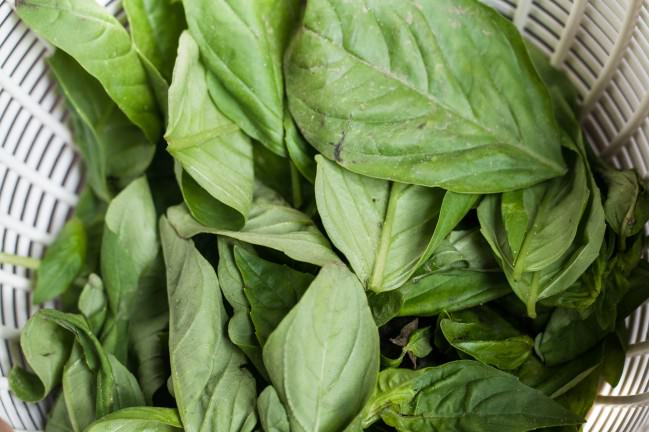 If you’re making this off season, or you’re running low on basil, you can sub in half spinach leaves for a sweet flavor, or half arugula leaves, for a more spicy flavor. In the spring I make this will stinging nettles and walnuts and it’s to die for. I often blanch the garlic in the boiling water for a minute or two, especially if I’m cooking for my mother who is sensitive to garlic.
If you’re making this off season, or you’re running low on basil, you can sub in half spinach leaves for a sweet flavor, or half arugula leaves, for a more spicy flavor. In the spring I make this will stinging nettles and walnuts and it’s to die for. I often blanch the garlic in the boiling water for a minute or two, especially if I’m cooking for my mother who is sensitive to garlic.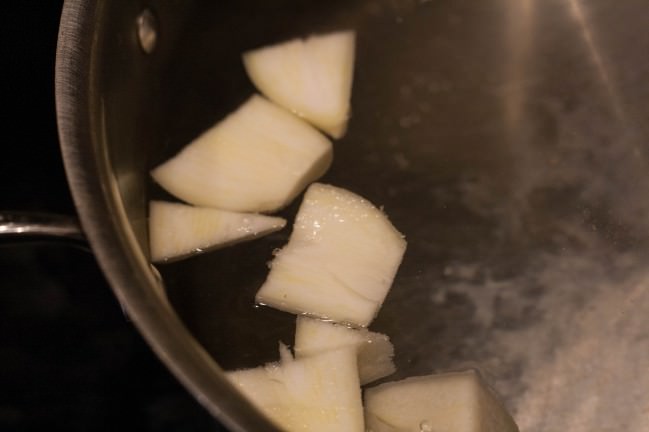 Place basil, garlic, nuts, cheese, salt in the food processor.
Place basil, garlic, nuts, cheese, salt in the food processor.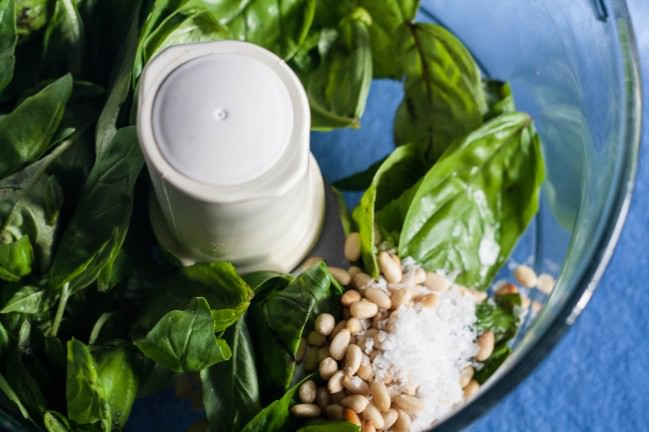 Run until it is uniform in texture.
Run until it is uniform in texture.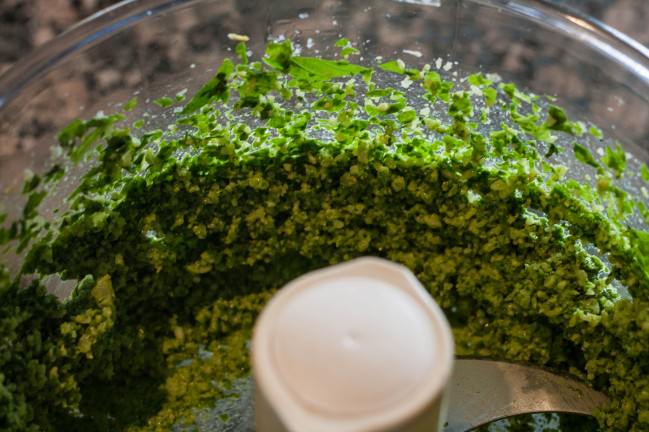 Slowly stream the olive oil into the paste. Set aside. Boil the pasta per the package instructions. Strain and place in a large bowl.
Slowly stream the olive oil into the paste. Set aside. Boil the pasta per the package instructions. Strain and place in a large bowl.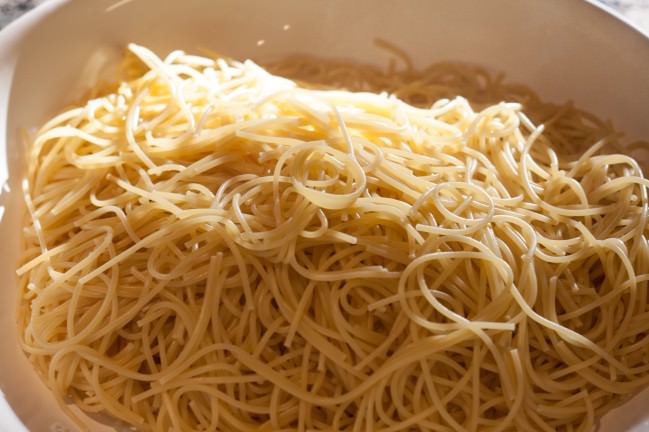 Top with the pesto and toss until well distributed. Garnish with basil leaves, parm and pine nuts.
Top with the pesto and toss until well distributed. Garnish with basil leaves, parm and pine nuts.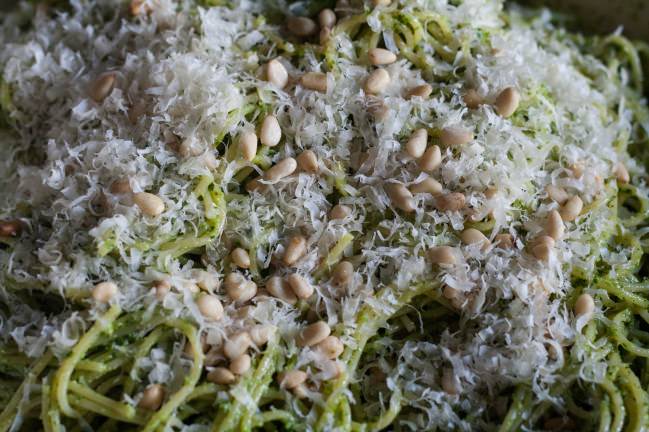 And don’t forget to make a giant batch and freeze it. It freezes well and you can enjoy farm fresh basil year round this way.
And don’t forget to make a giant batch and freeze it. It freezes well and you can enjoy farm fresh basil year round this way.
Note on the cheese: traditionally a mix or parm and fiore sardo are used. Fiore sardo is a Sardinian sheep milk cheese, or pecorino. Often it’s subbed for pecorino romano here in the states. It’s saltier than parm (at least in taste), so I often use a tiny bit more salt in the pesto when I use all parm. This time, I made it with an awesome buffalo parm I had on hand. Buffalo milk is richer in fat and protein than cow or even sheep milk and has a bright almost lemon-y flavor to it. It was wonderful and I didn’t want the romano to distract, so I used all parm. Experimenting with lots of hard italian cheeses all summer long is the best way to find what you like best!

Pingback: Soba Noodle Salad with Asian Pesto | Dirty Laundry Kitchen
Pingback: Pesto Potatoes with Soft-Boiled Eggs | Dirty Laundry Kitchen
Pingback: Banged Up Tomato Sauce